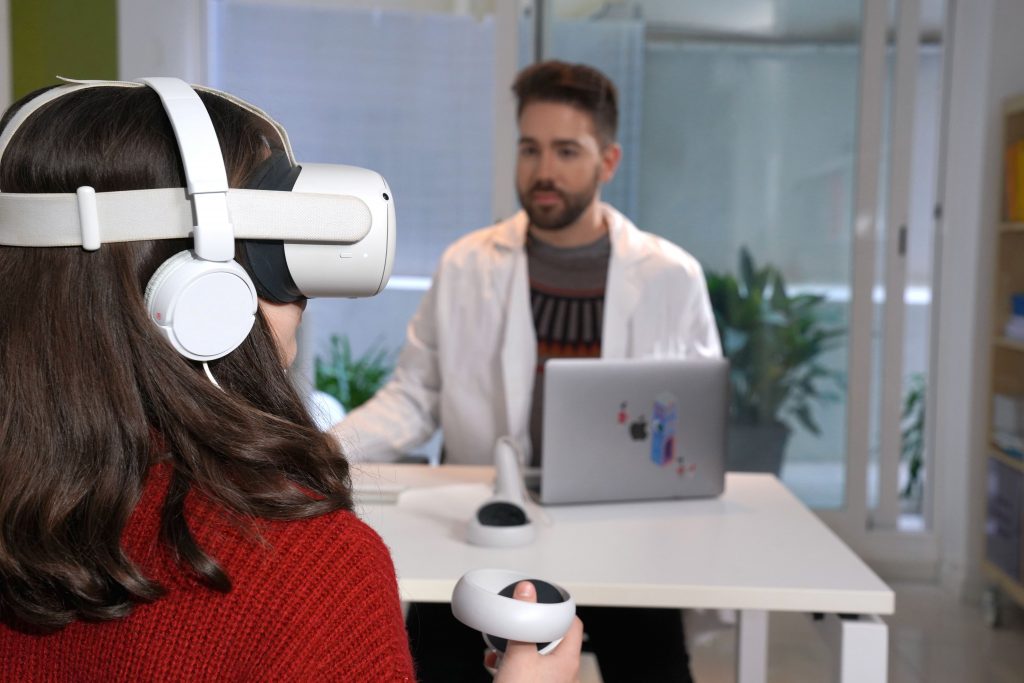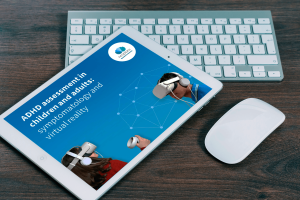Lisdexamfetamine is commonly used for the treatment of ADHD. Nesplora’s AULA test allows to monitor the treatment and its effectiveness in an accurate way.
We often see cases of prescription of treatment for attention disorders, such as lisdexamfetamine psychopharmaceuticals, when it is not clear how effective it is for that individual and whether it is the best treatment for their ADHD.
What is ADHD?
Attention deficit hyperactivity disorder (ADHD) is a disorder that affects millions of people. It is often diagnosed in childhood and considered a neurodevelopmental disorder, but it can also be identified in an adult.
The persistent problems of a person with ADHD are difficulty controlling attention (deficit), impulsive behaviors and often hyperactivity. We encourage you to continue reading this article to learn more about pharmacological treatment for ADHD and how virtual reality monitoring proves its effectiveness.
Types of treatments for ADHD
The first step in a potencial case of ADHD is a neuropsychological evaluation to confirm the diagnosis. It is recommended to follow a multimodal treatment consisting of a combination of ongoing psychological intervention with several of the following approaches:
- Neuropsychological evaluation, diagnosis and monitoring with Nesplora tests,
to later move onto:
- pharmacological intervention with stimulant psychotropic drugs,
- and psychological and educational intervention, with – for example – behavioral therapy, training approach or behaviorist approach.
What is lisdexamfetamine and how does it work?
Lisdexamfetamine (LDX) is a selective dopamine and norepinephrine reuptake inhibitor. It is commonly sold under the brand Vyvanse in the United States and Elvanse in Europe.
LDX works by blocking the presynaptic reuptake of the two neurotransmitters that are altered in cases of ADHD, so it is claimed to work by improving brain metabolism in the affected areas and promoting concentration.
Lisdexamfetamine has an effect of about 12 to 13 hours of duration. As soon as the drug is taken, the active ingredient passes directly into the blood (so it has no effect on the liver, thus facilitating tolerance) where it is metabolized and passes to the brain to act on the neurons.
Evaluation with AULA of the use of Elvanse© in ADHD cases with no ‘learning effect’ on monitoring

Patient in consultation using AULA
When monitoring a case of ADHD treated with LDX it is important that the follow-up is done in a precise and qualitative way. Thanks to the fact that the AULA test allows test-retest without learning, it is possible to evaluate the case before, during and after treatment to assess whether there has been improvement in the variables evaluated, without any contamination of the data: the effectiveness of the test is equally high in each new evaluation. In this way it is possible to evaluate the behavioral and cognitive symptomatic improvement: whether the medication is having counterproductive symptoms (e.g., in performance or any signs of dysregulation), or whether the desired goals are being achieved in terms of selective and sustained attention, attentional focus or other monitored variables.
The study Efficacy of lisdexamfetamine in the behavioral and cognitive symptomatic improvement of attention deficit/hyperactivity disorder: treatment monitored by the AULA Nesplora virtual reality test shows the improvement of cognitive symptomatology in ADHD through treatment with LDX (lisdexamfetamine) thanks to monitoring with AULA. This study is the first one able to demonstrate the capacity of pharmacological treatment with LDX (beyond the improvement detected in the behavioral domain).
For the first time, and thanks to AULA, we have a study that shows very significant improvements with the use of LDX in ADHD in selective and sustained attention, quality of attentional focus and hyperactivity, moderate improvements in impulsivity, and an almost null incidence in processing speed.
How the AULA test works to evaluate attentional processes with virtual reality
Nesplora has several products focused on neuropsychological assessment for professionals. In the case of the AULA test, a test of continuous execution in a virtual scenario focused on children and youth (from 6 to 16 years old), the aim is to observe the child throughout the simulation, which includes different stimuli and distractions for about 20 minutes. This simulation concludes with an immediate graphic report on the patient’s cognitive performance, assessing aspects such as attentional processing, impulsivity and motor activity.
In addition to ADHD, the AULA test is effective in pathologies such as anxiety, reading and writing problems, possible brain damage and behavioral and social skills problems.
You may not be a health professional, but you suspect that you or someone in your environment may have attention or anxiety problems. In that case, we recommend you to look here for your nearest specialist in our international network of professionals using Nesplora.
You might also find this interesting…
ADHD assessment in children and adults: symptomatology and evaluation with VR
Follow us and share this post on social networks, where we are waiting for you with more content about Mental Health and Education.
